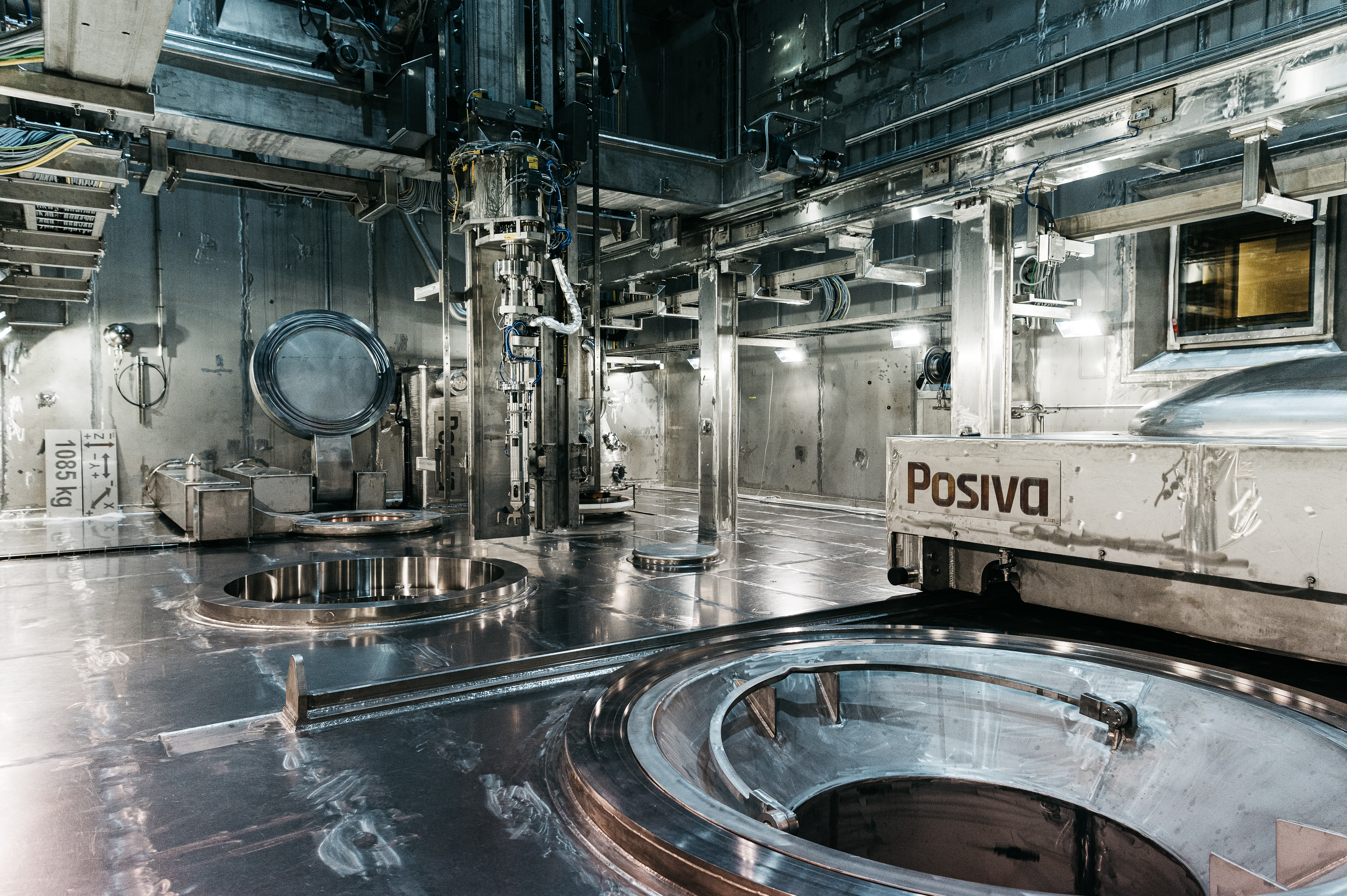First stage of encapsulation completed successfully in Posiva’s Trial Run of Final Disposal
The first canister has been packed successfully with test elements simulating actual fuel in the ongoing Trial Run of Final Disposal at Posiva’s final disposal facility for spent nuclear fuel. The first two encapsulations were carried out using only weights. In this third Trial, elements looking like actual fuel, were packed inside the canister.

The Trial Run is conducted completely under remote control in radiation-shielded facilities. The spent nuclear fuel is placed in the final disposal canister made of copper and spheroidal graphite cast iron. This takes place in the fuel handling cell which features concrete walls that are about 1.3 metres thick.
After all the fuel assemblies have been placed in the canister, it is filled with Argon and closed tightly with the inner steel lid. The fuel assemblies are not disassembled. The weight of one fuel assembly is about a quarter of a ton.
Copper lid closed using friction stir welding
The topmost copper lid of the canister is sealed by friction stir welding in the welding chamber and the leak-tightness of the joint is verified by means of visual as well as eddy current and ultrasound inspections. The sealing joint produced by the selected friction stir welding method has an integrity comparable to that of the canister mantle. The first three canisters have undergone also the welding and machining processes successfully in the Trial Run.
The encapsulation plant is connected to the underground final disposal repository with a canister lift which transports the canisters down to the underground reception station on the final disposal level at a depth of 430 metres. There they are transferred into the deposition tunnels with the transfer and installation vehicle.
In the Trial Run, the operation of the final disposal facility is tested comprehensively, albeit still without the spent fuel. The facility features many unique systems and equipment produced as a result of decades of research and now used together for the first time.
The Trial Run will take several months. The Trial Run now proceeds to the packing and sealing of canister number four.
Video: Transfer of the fuel element to the drying station.
Text: Pasi Tuohimaa, photos and video: Tapani Karjanlahti